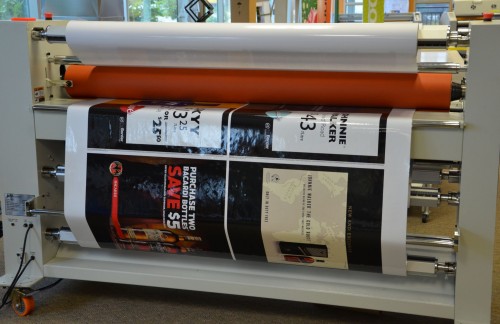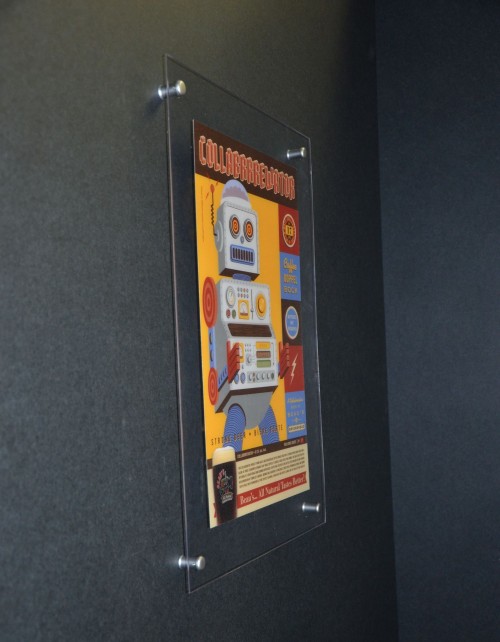
 Despite the rise of direct-to-substrate printing, the graphics market is still dominated by PVC films that can be laminated onto other materials. Photos courtesy Drytac Canada
Despite the rise of direct-to-substrate printing, the graphics market is still dominated by PVC films that can be laminated onto other materials. Photos courtesy Drytac Canada
In the calendering process, a PVC film is stretched over a series of rolls to create a flat sheet that retains some of its ‘memory,’ which can help mitigate shrinkage and maintain stability. It is worth noting there are differences between monomeric and polymeric formulations.
Monomeric PVC films contain plasticizers with shorter molecular chains than their polymeric counterparts. The addition of monomeric plasticizers softens the vinyl initially, but as they can leech out over time, the material can become more brittle. When plasticizers migrate away from the film, they can contaminate the adhesive, weakening it.
The plasticizers in a polymeric PVC film, given their longer molecular chains, contribute to increased stability, durability and the prevention of plasticizer migration away from the film. For these reasons, polymeric vinyl films command a slight price premium when compared to monomeric vinyl films. And as one may guess, monomeric vinyl films are used for shorter-term applications, while polymeric vinyl films are used for longer-term applications.
Adhesives of choice
Wide-format printing is also benefiting from the increased use of water-based acrylic adhesives on vinyl materials.
In the past, chemical solvent-based formulations were the adhesives of choice for vinyl films. Their inherent characteristics promoted long-term durability, as they performed well in many different environments with varying humidity, temperature and outdoor exposure. They even allowed graphics to be submerged in water.
Earlier water-based adhesives had difficulty competing in terms of these performance factors for printed graphics, but this is no longer the case in today’s market. Manufacturers have dramatically improved the range of performance capabilities that water-based adhesives can deliver. These efforts have included increased protection against plasticizer migration, more aggressive adhesion, broader service temperature ranges and longer-term durability.
As a result, the performance gap between more expensive solvent-based adhesives and less expensive water-based adhesives has been narrowing. With the performance trade-off between the two becoming much less significant than it used to be, water-based adhesives are delivering better value to signmakers than ever before.
Matching applications
Another growing trend among manufacturers of self-adhesive wide-format media has been a focus on application-specific products. As the old adage goes, ‘necessity is the mother of invention,’ which can be seen in new products borne out of customized applications and formulated for specific clients’ needs.
When considering what type of self-adhesive film will be the best choice for a job, there are many questions to answer, including the following:
- What degree of flexibility is required of the film during the installation process?
- Will the graphic’s adhesive need to stick to other plastics, metals or painted surfaces?
- Will the graphic need to be installed in a cold or warm environment?
- Will the graphic be situated in an area with strong variances in temperature?
By also asking suppliers detailed questions about their products to obtain more information, signmakers will be better-prepared to match the material to the job, manage clients’ expectations and minimize the risk of graphic failure.
It benefits both print service providers (PSPs) and their clients to have products well-defined for their applications. It also reflects well on manufacturers who are willing to listen to their customers to determine market demand.
With more attention given to designing products for specific uses, it is becoming less common to see self-adhesive wide-format media marketed simply as ‘promotional-grade’ or ‘intermediate-grade.’ While sign shops certainly still rely on ‘go to’ products for general applications, they are also ordering media created specifically for windows, walls, floors, vehicles, hoardings, hockey rink boards and so forth.





